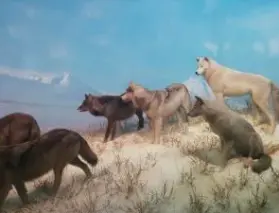 The Eve of Destruction
The Eve of Destruction
I was talking with some college students the other day. I had made the comment that I was retired, and one of the students expressed doubt that he would ever be able to retire. I asked why, and he said he didn’t think the world would even be here when he turned 65. When I again asked why, he gave a short list of the world’s problems, particularly noting global warming.
Shortly after that, I heard an old song that was a big hit when I was young, “The Eve of Destruction.” The song, written by P.F. Sloan and performed by Barry McGuire, came out in the summer of 1965. It was one of the earliest overtly political songs that received wide-spread airplay over what was then called “top 40 radio.”
For my generation, the very real possibility of nuclear war made many of us insecure about our prospects of reaching a ripe old age. Listening to Sloan’s song and thinking of the fears of the students I had talked with, I thought to myself “oh yeah, it’s always the eve of destruction.” If one focuses on the news headlines, destructiveness – whether it be from war, terrorism, random shootings, or natural disasters enhanced by global warming – seems to be a most dependable constant of our world.
The feeling of being on the eve of destruction, I suspect, has been present throughout history. I think of the citizens of Troy during the long siege of that city; the burning of Jerusalem by the Roman’s in 70 CE; the sack of Rome by the Visigoths in 410 CE; the victims of the Viking raiders along the coasts and rivers of Europe in the Middle Ages; the subjugation or destruction of Native Americans by Europeans; the plight of West Africans during the slave trade; America during the Civil War; Europe during either world war; the Russians under Stalin or the citizens of Syria right now. The examples fill the tomes of history, and how much worse any of these than anything any of us has ever known! Yet after each dark eve, morning returned; after each brutal winter, again came spring.
Growing in little cracks in the ancient rocks of Lake Superior, there is a small flower called the harebell. It seems the most fragile of living things, yet survives even the gale-driven surf of the lake. I think of it as a great optimist; its simple presence on the cold basalt a hymn of hope.
I think the whole living world, the so-called biosphere, is a little like the harebell. In certain ways it is fragile, but it is also incredibly tough and resilient. And this is true also of humanity and even of civilization. The natural world has lasted for billions of years, humanity for tens of thousands. These things know how to take care of themselves. Don’t despair. This is what I would like to have said to the students and added “the world is still wonderfully here. Trust it and love it.”
————————————————————–
The River of Blood
I grew up in a house on the banks of the Mississippi River in central Minnesota. Across the river from our house was a paper mill. Around the time that the song “Eve of Destruction” came out, I noticed that on certain days the paper mill released large quantities of red dye in the water. A few hundred yards south of the paper mill a railroad trestle crossed the river. If you walked over this bridge on the days when the mill used red dye, beneath you flowed a river of blood – at least that is what it looked like. As a kid, I found this fascinating.
Many years later, I learned that this paper mill made the colored paper the Crayola company used for its color crayons. (I learned this from a YouTube video of an episode of Mr. Rogers where he visited the mill.) In the sixties, and for decades earlier, rivers like the Mississippi had been used as sewers by cities and industries. In Minneapolis, the Mississippi occasionally exploded, the result of methane built up from rotting sewage. In Cleveland, the Cayuga River caught fire occasionally; a relatively small fire there in 1969 caught the attention of the nation and helped publicize the dismal state of our rivers and waterways. This helped lead to the signing of the Clean Water Act in 1972.
I still live near the Mississippi and I walk along its banks nearly every day. I always see eagles on my walk, and I have seen beaver, otter, and mink swimming in the water. And this is in downtown St. Paul. As an environment for wildlife, the Mississippi is immensely improved. We have the Clean Water Act to thank for that.
There is, however, one rather sour note to this otherwise sanguine assessment about the water quality of the river — this is the quantity of plastic bottles floating in it. I seldom look out on the river and not see at least one of these pathetic little vessels heading off toward the Gulf of Mexico, where it will continue to float for God knows how long. I don’t think these bottles pose any great danger to the river’s wildlife, but I have heard they cause various problems for life in the ocean.
I mention all this to say that some things have actually gotten better over time. And I could mention many other environmental and cultural things that have improved since I was young. And each of them also has its sour note. That’s the world we live in. But I have little doubt that the young people of today will be able to pass on a message to their children much like the one I’m passing on here: “It’s always the eve of destruction and its always the morning of a bright new day.” Nature is change and every change is equal parts creation and destruction. I think it wise not to dwell over much on either part.

















